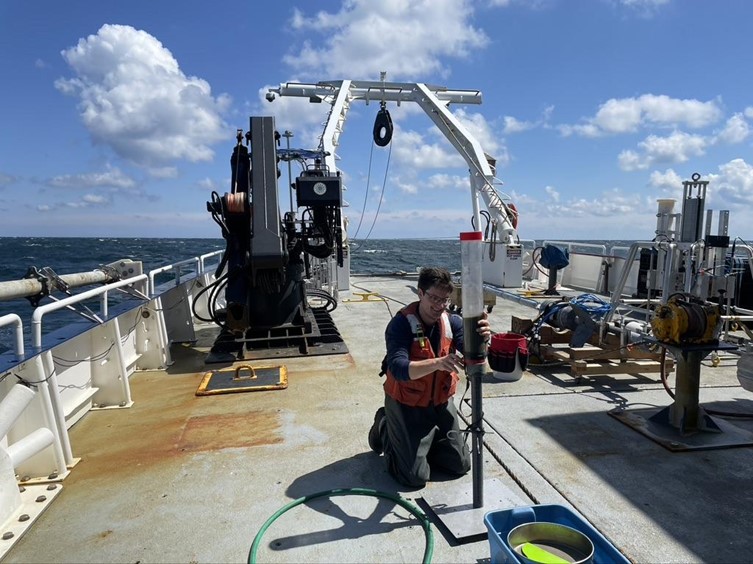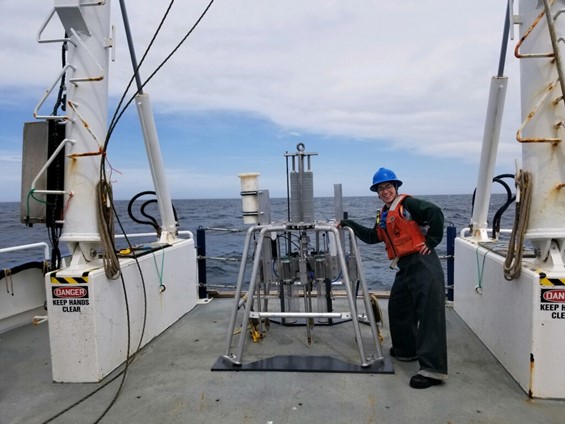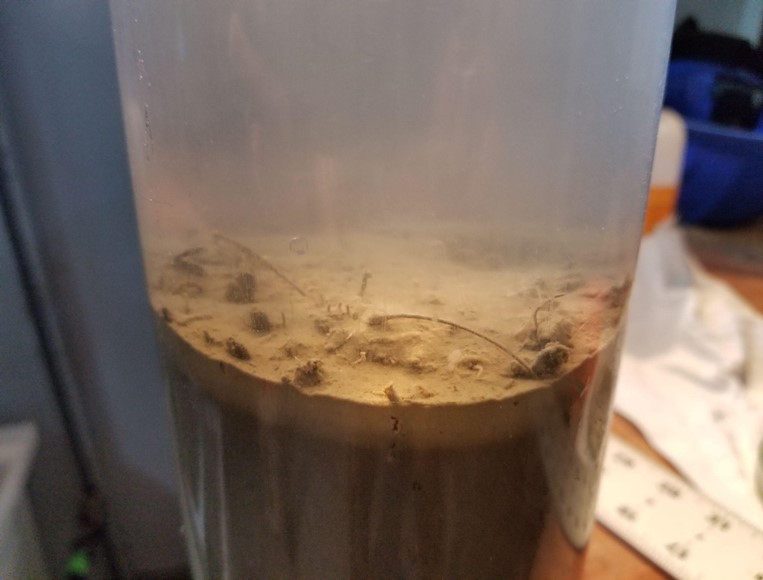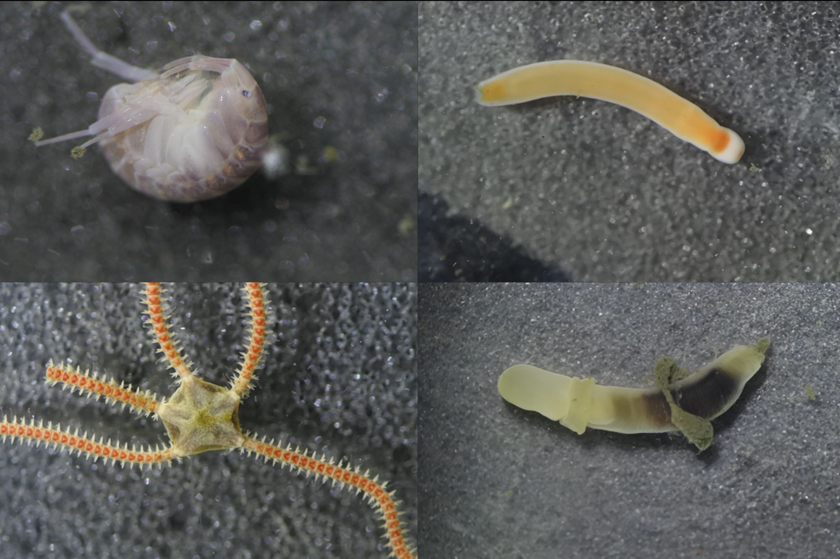(June 15, 2022) --

By: Madeline Frey and Cy Clemo, Dorgan Lab
In April 2022, we traveled from Dauphin Island to Massachusetts to participate in a research cruise with scientists from the University of Texas at Austin and the United States Geological Survey (USGS) on the New England shelf. Aboard the University of Rhode Island’s R/V Endeavor, we sailed to the edge of the continental shelf to study how acoustic signals (e.g., those used to map the seafloor) are affected by the physical and biological properties of seafloor sediment.

Acoustics are super important to understanding the ocean. You may know that marine mammals use acoustics to echolocate, or that ships use sound waves in the form of radar and sonar to navigate. We can also use acoustics to tell us what kind of mud is on the seafloor. As scientists in the Sediment Ecology Lab here at DISL, we’re interested in the interactions between infauna (burrowing invertebrates such as worms, clams, brittle stars, and shrimp) and their sediment habitat. Infauna mix sediment through their movement and feeding activities, called bioturbation. This sediment mixing can change the physical properties of their sediment habitat, which in turn can impact how acoustic signals move through the sediment. Additionally, several types of infauna have hard bodies (e.g., brittle stars, shrimp, clams) that can scatter acoustic signals.

To explore the relationship between bioturbation and acoustic signal behavior, we targeted an area of the shelf called the New England Mud Patch. This area has thick muddy sediment filled with infauna such as burrowing brittle stars, worms, tube-building shrimp, and sea pens. We collected sediment and acoustic measurements using a multicorer, which retrieves sediment samples from hundreds of feet below the surface. We took acoustic measurements of the mud inside the tubes, then washed the mud through a sieve to see what kind of infauna were living in it at the time of collection, and brought those animals back to DISL.

We still have a lot of sample processing and analysis to do back at DISL, but we thoroughly enjoyed life at sea aboard the Endeavor. We made new friends and saw some of our favorite collaborators, and sailed on the high seas for the first time!